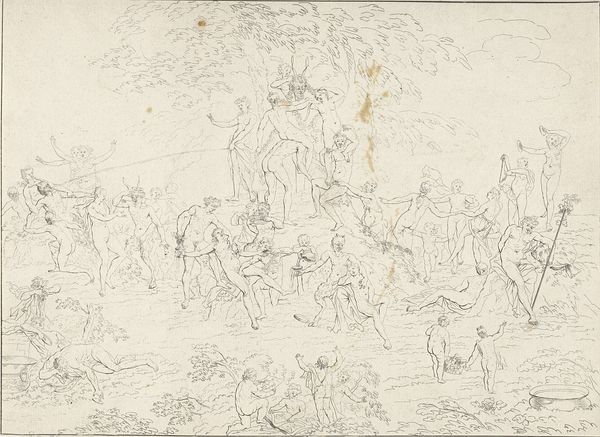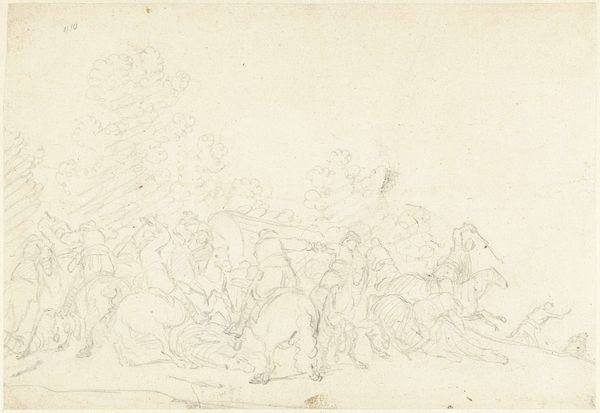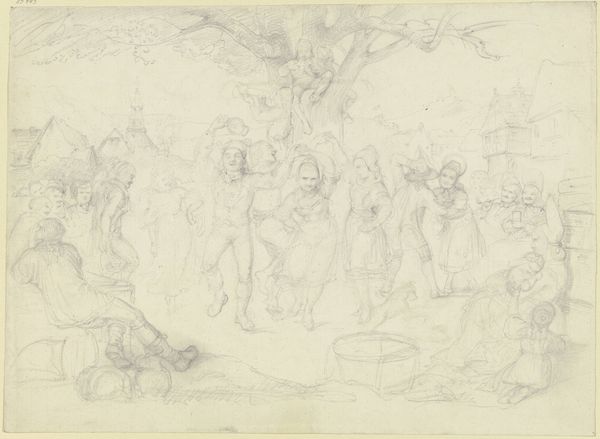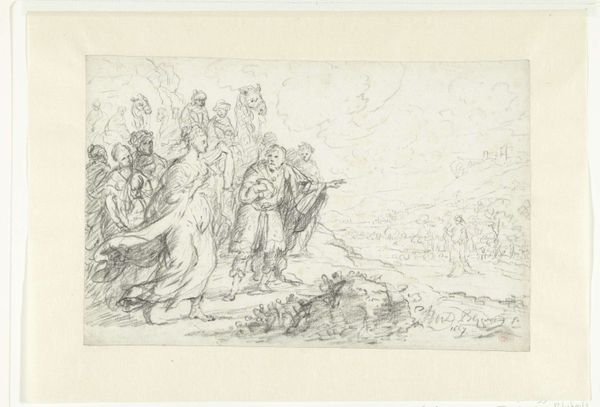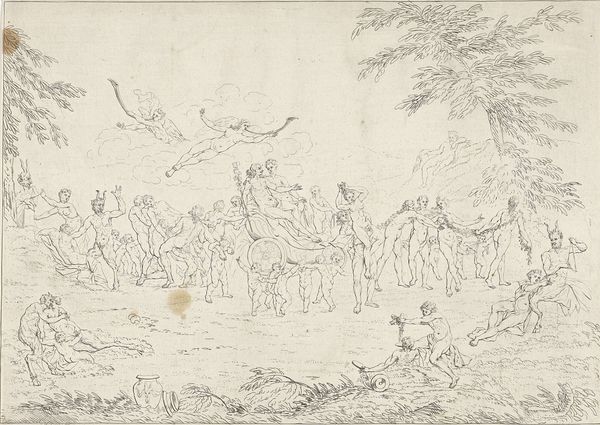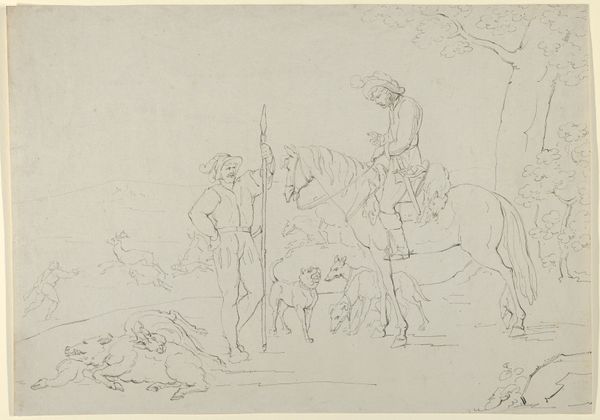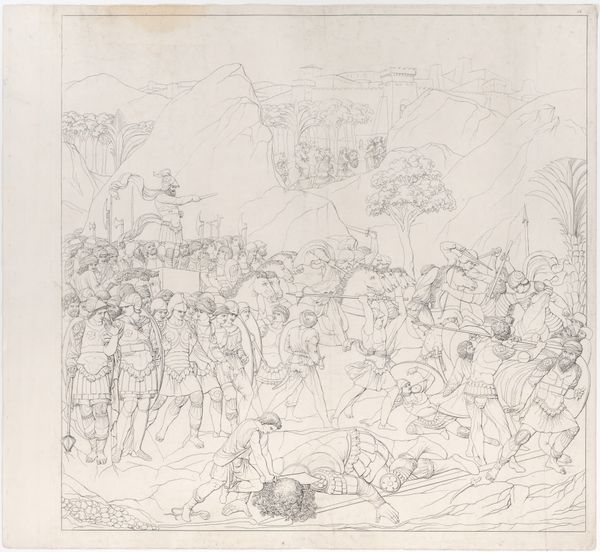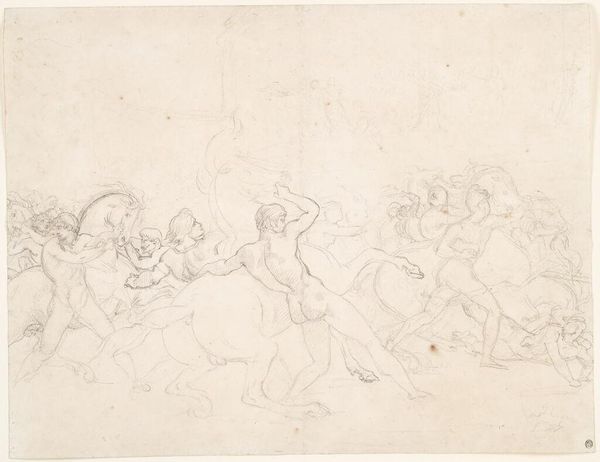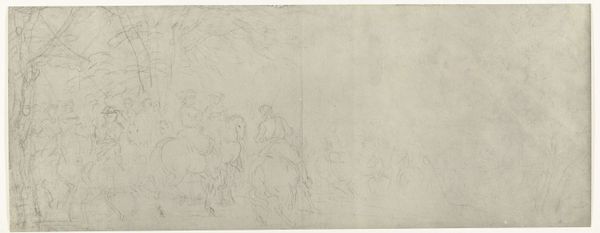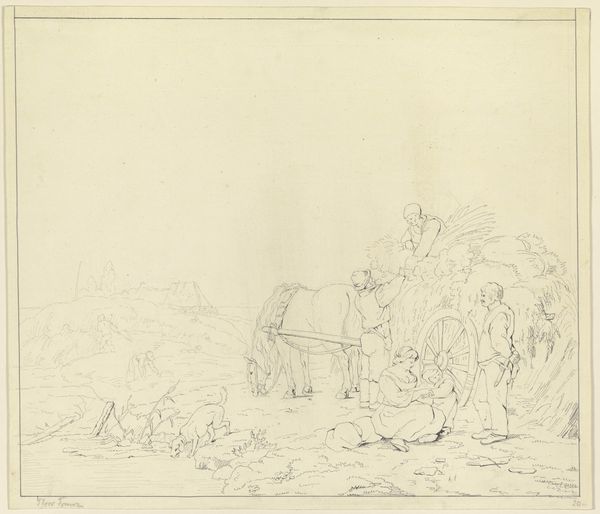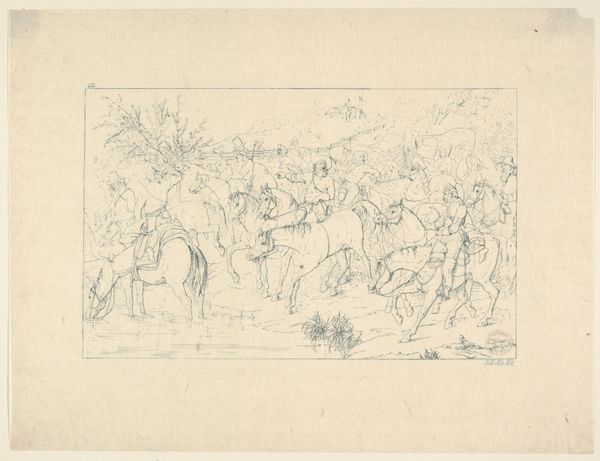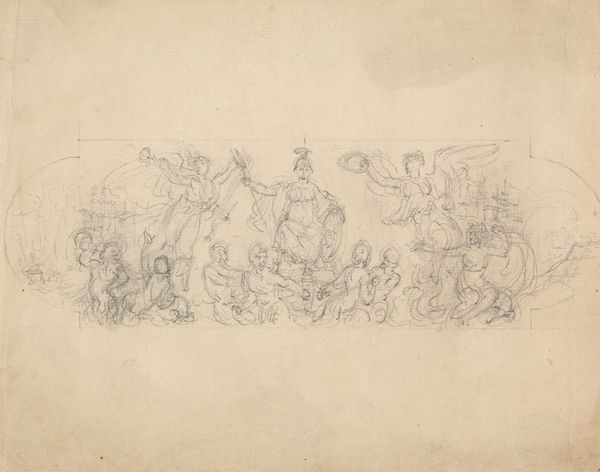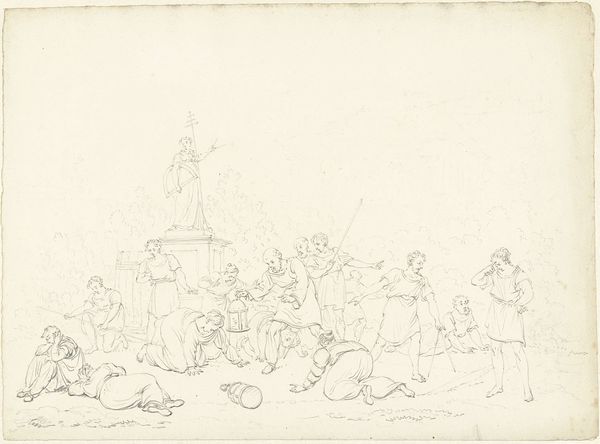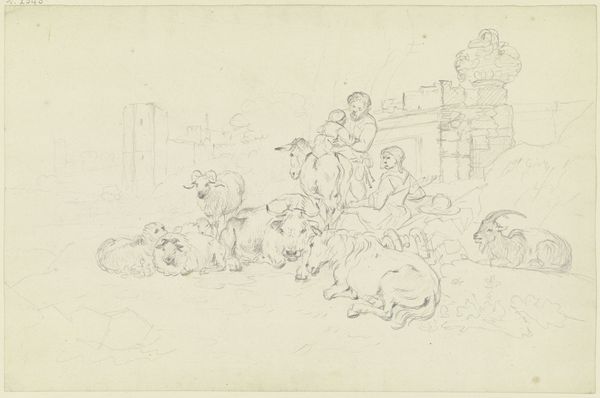
Aeneas draagt zijn vader Anchises uit het brandende Troje 1642 - 1653
0:00
0:00
drawing, pencil
#
drawing
#
toned paper
#
light pencil work
#
quirky sketch
#
baroque
#
dutch-golden-age
#
pen sketch
#
pencil sketch
#
landscape
#
figuration
#
personal sketchbook
#
ink drawing experimentation
#
pen-ink sketch
#
pencil
#
sketchbook drawing
#
history-painting
#
sketchbook art
Dimensions: height 298 mm, width 403 mm
Copyright: Rijks Museum: Open Domain
Curator: Leonaert Bramer's drawing, "Aeneas carrying his father Anchises from burning Troy," created between 1642 and 1653 using pencil on toned paper, is now in the Rijksmuseum collection. It strikes me as quite chaotic, almost a whirlwind of figures. What do you make of it? Editor: The composition definitely has a restless energy. My eye keeps getting drawn to different areas – the group clustered around what I presume are Aeneas and Anchises, then to the distant structures and figures near the water. What stands out to you in its formal qualities? Curator: The artist's use of line is particularly compelling. Note how Bramer employs very delicate, almost ephemeral lines, across the entirety of the drawing, creating a sense of movement and instability that mirrors the turmoil of the scene. Consider how the line varies in thickness and intensity, building a hierarchy of importance within the composition. Do you see how the tonal variations work with the line to enhance the depth? Editor: I see that. It’s like the denser lines and darker areas give weight to the foreground figures, especially around Aeneas. And that the lighter, fainter lines create the impression of distance, or things further away or fading? Curator: Precisely. Notice too the recurring motif of circularity—the way the figures are grouped and the suggested round forms of shields or helmets. Do you believe that this visual circularity aids the cohesion of the overall chaotic picture? Editor: Interesting! Yes, even amidst the apparent disorder, those shapes do pull it together visually, giving it rhythm. I was so focused on the historical aspect that I didn’t quite appreciate how the formal elements reinforce the narrative. Curator: That's the crux of it, isn’t it? The artistic success hinges on Bramer's deployment of these structural qualities. Editor: It is fascinating how a close reading of form illuminates the themes, especially of movement and salvation, like this. Thank you.
Comments
No comments
Be the first to comment and join the conversation on the ultimate creative platform.
